Trees provide us with a host of benefits, from providing clean air and shade to supporting local wildlife. But for trees to stay healthy and thrive, they need special care. One way to provide this care is through mulching. Mulching is an effective way to protect trees from pests, conserve moisture, and improve the soil around them.
In this article, we'll explore the many benefits of mulching trees so you can give your trees the care they need. Mulching is an important part of tree care as it helps protect the tree's roots from temperature extremes, retains soil moisture, reduces weed growth, and can even add nutrients back into the soil. It is important to choose the right type of mulch for your tree and apply it correctly. There are two main types of mulch – organic and inorganic. Organic mulches come from natural sources such as wood chips, straw, bark, and compost.
Inorganic mulches are usually made from rocks or rubber, and can be more expensive than organic mulches. Each type of mulch has its own benefits. Organic mulches are great for adding nutrients into the soil and keeping weeds at bay. They also help retain moisture, which is beneficial for water-loving trees. The downside of organic mulches is that they can decompose over time, so they may need to be replaced more regularly than inorganic mulches.
Additionally, some organic mulches may contain weed seeds that can germinate and become a problem. Inorganic mulches are generally more durable than organic mulches and can last longer. However, they do not add any nutrients into the soil and can be more expensive. In addition, inorganic mulches can cause problems with drainage because water cannot pass through them as easily as organic mulches. When choosing a mulch for your tree, it is important to consider the size, color, smell, and texture of the mulch. Smaller pieces of mulch will break down more quickly than larger pieces, so it’s best to choose a mulch with larger pieces.
Dark colored mulches tend to absorb heat more quickly than lighter colored mulches, so these are better suited for warmer climates. The smell of the mulch should also be taken into consideration as certain types of mulch can have an unpleasant smell. Once you have chosen the right type of mulch for your tree, it’s important to apply it correctly. The ideal depth for applying mulch is two to four inches around the base of the tree, with an additional two inches around the drip line (the area between the trunk and the farthest reaching branches). It’s important not to pile the mulch too close to the trunk as this can create a barrier that restricts air flow and encourages disease.
Additionally, it’s important to reapply mulch on a regular basis (once a year or so) as it can decompose over time. In addition to using mulch to nourish your trees, there are other ways you can care for them. Fertilizers and watering can help provide additional nutrients for trees that are struggling to survive. Pruning is also important as it helps to remove dead or diseased branches which can allow more light into the tree canopy and encourage new growth. It’s important to follow proper tree care tips in order to get the best results. Mulching is one of the most important aspects of tree care as it helps protect roots from temperature extremes, retains soil moisture, reduces weed growth, and adds nutrients back into the soil.
Choosing the right type of mulch and applying it correctly is essential for healthy trees. Additionally, fertilizers, water, and pruning are all important elements of proper tree care.
Tips for Choosing Quality Mulch
When selecting mulch for your trees, there are a few things to keep in mind. First, consider the size of the mulch particles: you'll want to use a mulch that will not be easily washed away by rain or other elements. Also, consider the color of the mulch: darker shades may retain more heat and may not be ideal for trees in hotter climates.Finally, take a moment to smell the mulch: a strong odor may indicate that the mulch has been sitting for too long and should be avoided. In addition to these factors, it is important to ensure that the mulch you choose is free from contaminants or disease-causing organisms. It is also important to consider the quality of the mulch, as higher-quality mulches can last longer and are often easier to work with. By keeping these tips in mind, you can choose a quality mulch that will provide your trees with the necessary nutrients and protection they need.
Choosing the Right Mulch
When it comes to choosing the right mulch for your tree, there are a few factors you'll need to consider. First, you'll want to identify what type of tree you have and what type of soil it is growing in. Different types of trees require different types of mulch. For example, pine and fir trees prefer coarse mulch, while deciduous trees prefer a finer variety.You'll also want to consider the climate in which the tree is growing. For instance, if you live in a dry climate, you may want to choose a mulch that will help retain moisture in the soil. If you live in a colder climate, you may want to choose a mulch that will protect the tree's roots from temperature extremes. In addition to choosing the right type of mulch for your tree, you'll also need to ensure that you apply it correctly. This means using the proper amount of mulch and spreading it evenly around the base of the tree.
When applying mulch, make sure to leave at least 4 inches between the mulch and the trunk of the tree. Mulching too close to the trunk can cause rot and other damage.
Applying Mulch Around Trees
When applying mulch around a tree, it’s important to consider the type of mulch, how much to use, and how far away from the trunk to spread it. Different types of mulch can have different effects on soil temperature and moisture, so it’s important to choose the right one for your tree. Generally, mulch should be applied in a ring around the base of the tree, at least two to three inches deep.This will help protect the tree’s roots from temperature extremes and retain soil moisture. The mulch should also be spread no closer than six inches from the trunk. This will help protect the tree’s bark from damage caused by contact with the mulch. Mulching trees is an important part of tree care.
Not only does it help protect the tree’s roots from temperature extremes, retain soil moisture, and reduce weed growth, but it can also add nutrients back into the soil. By following these steps and choosing the right type of mulch for your tree, you can ensure that your tree gets all the benefits of mulching.
Additional Tree Care Tips
Mulching is an important part of tree care, but there are other tree care tips to consider as well. Fertilizers can help to improve the health of your trees, providing them with essential nutrients such as nitrogen, phosphorus, and potassium. It's important to use fertilizers that are specifically designed for trees, as using the wrong ones could cause harm.Watering your trees regularly is also important, as trees need water to stay healthy and to grow properly. Pruning is also an essential part of tree care. Pruning helps to remove dead or damaged branches which can be a hazard, as well as helping to encourage new growth and improve the overall shape of the tree. Following proper tree care tips is essential in order to get the best results.
Mulching is a great way to protect your trees from temperature extremes and retain soil moisture, but it's also important to provide your trees with other essential nutrients and regular water. Pruning can help to ensure that your trees stay healthy and strong, while fertilizers can help provide them with essential nutrients. When combined with proper mulching techniques, these tree care tips can help keep your trees healthy and looking their best.
Types of Mulch
Mulching is an important part of tree care, as it helps protect the tree's roots from temperature extremes, retains soil moisture, reduces weed growth, and can even add nutrients back into the soil. But when it comes to selecting and applying the right mulch, it is important to understand the different types of mulch available.There are two main types: organic and inorganic.
Organic mulch
is made up of natural materials such as wood chips, bark, straw, and shredded leaves. It helps retain moisture in the soil and adds nutrients as it decomposes. Organic mulches can also provide homes for beneficial microorganisms and insects that help break down the organic matter and improve soil fertility.Inorganic mulch
includes materials such as pebbles, gravel, and plastic sheeting. It is often used in areas where organic matter would be difficult to maintain or in areas where organic matter is not allowed.Inorganic mulch does not add nutrients to the soil or provide a home for beneficial organisms, but it can help retain moisture and control weeds. No matter which type of mulch you choose, you should always apply a layer that is at least 3 inches thick and keep it away from the base of the tree. This will help ensure that the tree receives the full benefits of the mulch.
Reapplying Mulch Regularly
Reapplying mulch regularly is an important part of tree care, as the mulch helps to protect the tree’s roots from temperature extremes, retain soil moisture, and reduce weed growth. Regularly reapplying mulch also helps to replenish essential nutrients in the soil. The amount of mulch that needs to be reapplied will depend on the type of tree and the amount of activity near the tree.It is generally recommended to reapply mulch at least once a year for best results. When reapplying mulch, it is important to use the right type and amount. Too much mulch can be detrimental to trees, as it can block oxygen and water from reaching the roots. Too little mulch does not provide adequate protection and can lead to weed growth and other issues. The ideal depth of mulch should be two to four inches.
It is also important to use an organic mulch, such as wood chips or bark, as these are the best for tree health. It is also important to remember that mulching should never be done in a way that creates a “volcano” around the tree trunk. This can lead to the buildup of water around the tree, which can lead to rot and disease. Also, when adding new mulch, it is important to spread it out evenly around the tree. This will help ensure that the tree receives an even amount of protection. Mulching is an important part of tree care that can help protect a tree's roots from temperature extremes, retain soil moisture, reduce weed growth, and add nutrients back into the soil.
Choosing and applying the right mulch for your tree is essential for achieving these benefits. Quality mulch should be chosen carefully, applied in the right amounts, and reapplied regularly. By following these tips, you can ensure your trees remain healthy and vibrant. In conclusion, mulching trees is an important part of proper tree care that can provide many benefits. Remember to choose the right type of mulch for your tree, apply it correctly, and reapply it regularly to keep your tree healthy.
With the right care and maintenance, you can ensure your trees remain beautiful and vibrant.
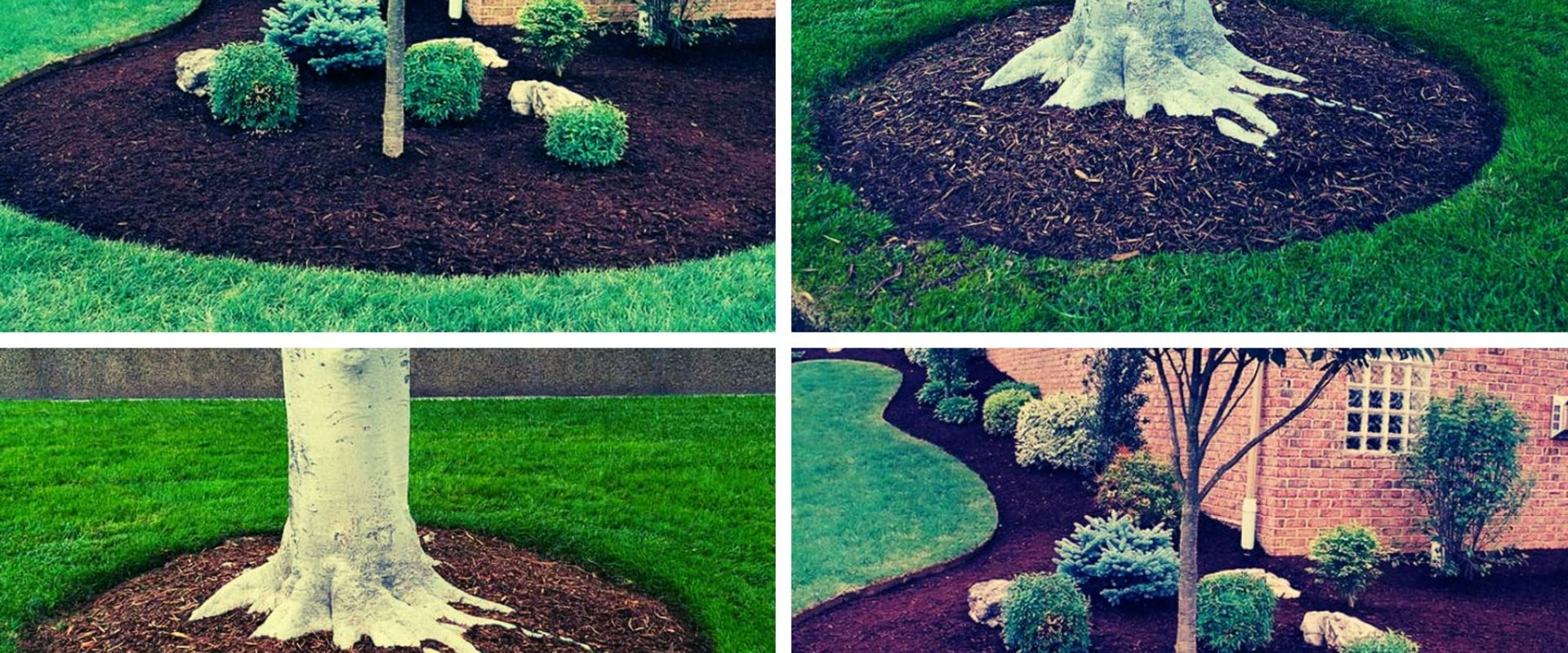
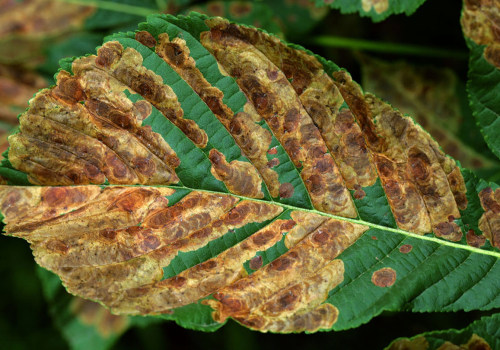
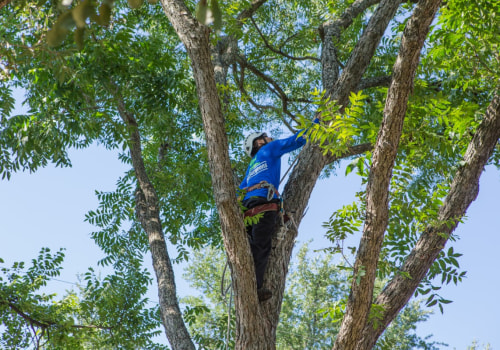
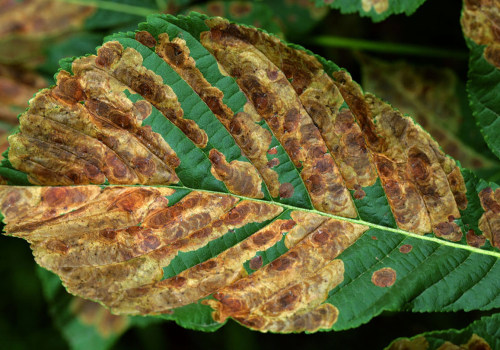

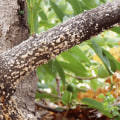


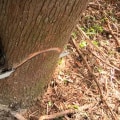
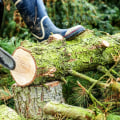


Leave Message